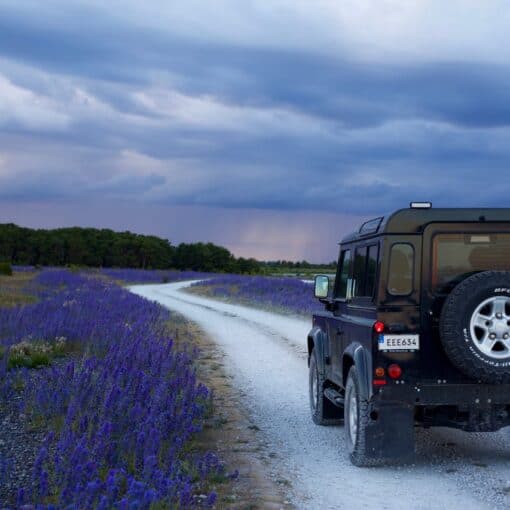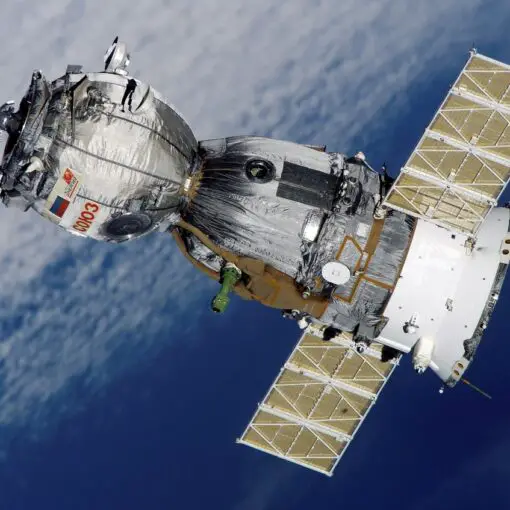Whether you’re an experienced ham radio operator or new to emergency communications, understanding the right frequencies can be a lifesaver.
One of the most important frequencies for preppers is the 2m simplex frequency at 146.52 MHz. It is almost always monitored by someone, which increases the chances of your call being heard during a critical moment.

Ham radio frequencies vary based on location and preference, but some general ones are valuable for most preppers.
Another commonly used frequency is the 70cm simplex frequency at 446 MHz, which offers a reliable option for short-range communication.
These frequencies play a crucial role in disaster preparedness and emergency situations.
Learning and memorizing these key frequencies ensures that you’re well-prepared to communicate when conventional methods fail. This knowledge can make a significant difference in staying connected with others and getting help when you need it most.
Key Takeaways
- One key frequency for preppers is 146.52 MHz.
- Another important frequency is 446 MHz for short-range communication.
- Memorizing these frequencies is critical for effective emergency preparedness.
Understanding Ham Radio Basics

Ham radio is crucial for emergency communication, especially for preppers. It allows for contact over short and long distances, making it invaluable during disasters.
The Fundamentals of Amateur Radio
Ham radio uses various radio frequencies to communicate. The most common bands are HF (High Frequency), VHF (Very High Frequency), and UHF (Ultra High Frequency).
- HF ranges from 3 to 30 MHz and is good for long-distance communication.
- VHF ranges from 30 to 300 MHz and works well for short to medium distances.
- UHF ranges from 300 MHz to 3 GHz and is used for very short-range communication.
Communication can be in AM (Amplitude Modulation), FM (Frequency Modulation), or even Morse Code. This diversity allows ham radios to be versatile tools.
Licensing and Regulations
To operate a ham radio legally, you must have a license from the Federal Communications Commission (FCC).
There are three main types of licenses:
- Technician License: This is the entry-level license. It grants access to VHF and UHF frequencies and some access to HF. You need to pass a 35-question exam to get this license.
- General License: This allows more access to HF frequencies. You need to pass an additional 35-question exam after obtaining the Technician License.
- Amateur Extra License: This is the highest level and provides full access to all amateur radio bands and frequencies. You need to pass a 50-question exam after the General License to get this.
Getting licensed helps ensure responsible and effective use of ham radios.
Equipment Essentials for Ham Radios
Key equipment for ham radio includes:
- Transceivers: These devices transmit and receive signals. They come in varying power levels from handheld to base stations.
- Antennas: Essential for sending and receiving signals. Different types work best for different frequencies.
- Power Supplies: Necessary to run your radio. Options include batteries or solar panels for self-sustained power.
- Microphones and Speakers: Used for voice communication.
For emergency preparedness, consider equipment that works off the grid, like portable VHF radios and extra batteries.
Ham radio is vital for preppers in SHTF (Stuff Hits The Fan) scenarios and potential EMP (Electromagnetic Pulse) events.
Investing in and learning to use proper radio equipment ensures reliable communication during emergencies.
Preppers’ Guide to Ham Radio Use
In emergencies, having reliable communication is vital for preppers. Ham radio offers the most effective way to stay connected during disasters and survival situations. This guide covers selecting the right frequencies, setting up for optimal performance, and using mobile ham radios.
Selecting Frequencies for Survival Communications
Choosing the right frequencies is key.
Preppers often rely on specific ham radio prepper frequencies like the 2m Simplex Frequency (146.52 MHz) for its wide monitoring by others, making your call more likely to be heard.
The 70cm Simplex Frequency (446 MHz) is also popular for short-range communication.
It’s important to program these frequencies into your radios and memorize them for quick access.
In addition, preppers can use dual-band radios to switch between frequencies easily, enhancing communication reliability in varying situations.
Setting Up for Reliability and Range
For reliable communication, it’s crucial to set up your ham radio for maximum range and power.
A base station with a high-gain antenna improves signal strength, allowing you to reach more distant contacts.
Many preppers use repeaters to extend their communication range, especially in mountainous or remote areas.
Battery-powered radios are essential to keep communication channels open during power outages.
Solar chargers and extra battery packs help ensure your radio stays functional.
Lastly, keeping your equipment in good condition by regular checks and maintenance ensures it performs well when needed most.
Mobile Ham Radio Operations for Preppers
Mobile ham radio operations are a practical option for preppers on the move.
A mobile setup can be installed in vehicles, providing communication while traveling.
Compact and lightweight radios are advisable for ease of handling and portability.
Using magnetic mount antennas on vehicles enhances signal strength and range.
It’s wise to familiarize yourself with local repeater frequencies to maintain connectivity while mobile.
Mobile radios should be versatile, with options to connect to multiple power sources including car batteries.
Efficient mobile operations ensure continuous communication during bug-out scenarios or when traveling to safer locations during an emergency.
Emergency Communications and Protocols
Ham radios play a critical role in maintaining communication during emergencies and disasters. They enable communities to share updates, coordinate rescue efforts, and stay informed when traditional infrastructure fails.
During disasters, ham radios are invaluable for staying in touch.
Emergency communication relies on various frequencies to bypass damaged infrastructure.
Notably, there are designated emergency channels that preppers should be familiar with.
The Global Maritime Distress and Safety System (GMDSS) and channels like Citizens Band (CB) channel 9 at 27.065 MHz are essential for maritime and road communications.
The Federal Emergency Management Agency (FEMA) also uses specific frequencies for national disaster coordination.
You need to know these frequencies to monitor updates and communicate effectively with agencies and other ham operators.
For local emergencies, the General Mobile Radio Service (GMRS) and Multi-Use Radio Service (MURS) can be extremely effective for short-range communication within communities.
Establishing Contact and Broadcasting Messages
In an emergency, establishing contact quickly is crucial.
Start by identifying and using simplex channels (direct radio-to-radio communication without repeaters). This is important when repeaters are down.
Regularly scheduled practice drills help preppers know exact procedures and channels to use.
Using ham radios for long-distance communication is useful when local infrastructure like phone lines are down.
The High Frequency (HF) bands can facilitate long-range DX communication, allowing contact with ham operators across vast distances.
During SHTF scenarios, keeping communication brief and efficient is key.
Emergency messages should be clear, concise, and contain important information such as exact location and situation status.
Knowledge of emergency protocols and practice in their application is critical for effective emergency communications.
Frequently Asked Questions
Ham radio frequencies play a crucial role for preppers, offering reliable communication options during emergencies. The following sections address common questions about the best frequencies and tools preppers can use.
What are the best ham radio frequencies for emergency communication?
The 2m simplex frequency at 146.52 MHz is one of the most commonly monitored frequencies by ham radio operators.
Additionally, the 70cm simplex frequency at 446 MHz is useful for short-range communication.
These frequencies provide a reliable way to get your message heard during an emergency.
How can I find local ham radio frequencies suitable for prepper use?
To find local ham radio frequencies, you can check local ham radio clubs, online forums, and resources.
Websites like the Ham Radio Prepper Frequencies Guide offer comprehensive lists of frequencies that are monitored in different areas.
Where can I download a list of SHTF ham radio frequencies?
You can download lists from websites dedicated to emergency preparedness and ham radio, such as Survival Sullivan.
These lists often include recommended frequencies for various emergency scenarios, ensuring you have a robust plan in place.
What is the National Calling Frequency for ham radio and why is it important for preppers?
The National Calling Frequency for ham radio is 146.52 MHz.
It is important because it is widely monitored, increasing the chances that someone will hear your call for help.
Preppers rely on this frequency to establish initial contact during emergencies.
How does the 333 radio plan work for emergency preparedness?
The 333 radio plan suggests monitoring the radio for three minutes at the top of every three hours.
This plan helps ensure that you don’t miss important communications while conserving battery life.
It is an effective strategy for maintaining periodic check-ins during emergencies.
Why are Baofeng radios commonly recommended for preppers, and which frequencies do they use?
Baofeng radios are popular among preppers because they are affordable, versatile, and easy to use. They can operate on both the 2m (144-148 MHz) and 70cm (420-450 MHz) bands.
These radios are capable of accessing commonly used prepper frequencies, making them a practical choice for emergency communications.





